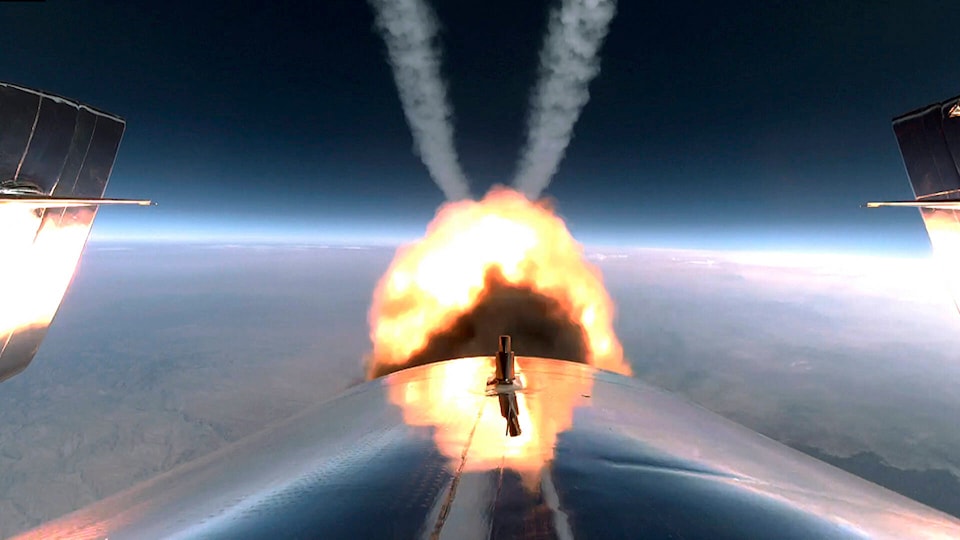On Sunday morning, July 11, British billionaire Richard Branson made space history.
His Virgin Galactic vessel, VSS Unity, reached an altitude of 83 kilometres before returning to Earth. That altitude was high enough to be considered the edge of space.
The achievement itself was nothing new. People have made voyages into space for the past 60 years, starting in April, 1961, when Yuri Gargarin of the former Soviet Union was the first person to reach space. The next month, Alan Shepherd of the United States was the first person to manually control a spacecraft in space.
Since that time, people have landed on the moon in six U.S. missions, from 1968 to 1972. Unoccupied vessels have been sent to Mars and beyond. There is also an ongoing quest to find planets where people could live in the future.
Astronauts from numerous countries, including Canada, have made the voyage into space.
READ ALSO:
READ ALSO:
What made Branson’s voyage significant was that it was a commercial venture, not part of a government space program. His voyage opens the door for commercial space tourism.
On July 2, Jeff Bezos of Amazon is expected to launch a commercial spacecraft, and Elon Musk’s SpaceX program is expected to launch a vessel later this year.
Space tourism and commercial space flight have been concepts in science fiction for many years. The concept is explored in Ray Bradbury’s works, including his 1950 novel, The Martian Chronicles. It is also included in the 1968 science fiction movie, 2001: A Space Odyssey, by Arthur C. Clarke.
Andy Weir’s 2017 novel, Artemis, features tourist visits to the moon. (Weir is also the author of the 2011 novel, The Martian.)
In the late 1960s, Clarke was optimistic about the possibility of space tourism. “I intend to go to the moon when the tourist service starts; and I hope (but hardly intend) to go to Mars,” he said at the time.
There’s something exciting about the prospect of visiting space, and the ability to book a space voyage brings with it a sense of optimism. There are new horizons to explore.
Some are considering the possibility that in the future, people might leave Earth to explore distant planets. Again, this has been a theme in science fiction stories in the past, but now we are a little closer to realizing this dream.
Space tourism will be a venture for the extremely wealthy, at least at first. The initial tourist flights into space will not be cheap, with ticket prices around $250,000 US or more than $311,000 Cdn.
Eventually, it is possible prices will come down and space tourism will be priced within reach of a greater number of people. Whether this will result in voyages to the moon or other planets remains to be seen.
While it is fine to look skyward and dream about travel to space, those trips are not permanent.
Every space traveler will need to return to Earth. This is where we live.
The biggest challenges facing us are not about space flight or other planets. Rather, they are about taking care of this planet and the 7.9 billion people who live here with us.
A trip to space, no matter how amazing, is a temporary excursion. This Earth is where we live.
John Arendt is the editor of the Summerland Review.
To report a typo, email:
news@summerlandreview.com.
news@summerlandreview.com
Like us on and follow us on .



